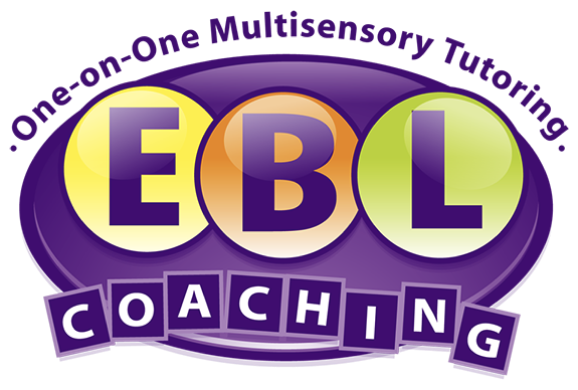
Orton-Gillingham Tutors
Orton-Gillingham tutors can help your child thrive in school. With this methodology, Orton-Gillingham tutors integrate multisensory tools, such as colored sand, magnetic tiles, and shaving cream when working with your child to develop stronger reading and writing skills.
Orton-Gillingham tutors typically start by assessing your child’s reading and spelling skills. Your child may struggle to decode single-syllable words such as cat, mug, or log, or might struggle to read and spell more complex multisyllabic words, such as rainbow or carpet. Orton-Gillingham tutors should always individualize the Orton-Gillingham tutoring based on the needs of each student.
The Orton-Gillingham method is a research-based, multisensory technique that helps students develop stronger reading and spelling skills. A sample lesson that Orton-Gillingham tutors may use for a student struggling with foundational reading skills may be as follows: the Orton-Gillingham tutor may teach sound/letter relationships starting with groups of four consonants and one short vowel. They may say to the student, for instance, while holding up a flash card, “This is the letter t, like table, it makes the sound /t/.” The Orton-Gillingham tutor would hold up the card with the letter on the front, then flip it around to show the key picture of a table, and then turn it back around to say the sound. The student would then repeat the letter name/key picture/sound back to the Orton-Gillingham tutor. Next, the Orton-Gillingham tutor would demonstrate sand writing. They might take out a tray of sand and write the letter t in it, saying aloud “down and across.” The Orton-Gillingham tutor would then ask the student to trace the letter t in the sand three times or more, while saying the lingo for forming the letter out loud. The Orton-Gillingham tutor might then move onto sky writing, where, using gross motor muscles, they would write the letter t in the sky, saying “down and across”. The student would then do the same sky writing exercise. Next, the Orton-Gillingham tutor might have the student do exercises in a workbook practicing this letter, and later work on blending sounds to form basic words using flash cards and possibly magnetic tiles or whiteboards.
For students who have difficulty with longer, multisyllabic words, Orton-Gillingham tutors might teach students how to break down longer words into syllables in order to accurately decode them. For instance, Orton-Gillingham tutors might teach students compound words, which is when two small words are combined to form one big word. They might learn to break down words with endings, such as -est, -ed, -ing, or -ful. They may also learn about rabbit words; when two consonants come between two vowels, the student should split the word between the consonants in the VC/CV pattern. Orton-Gillingham tutors may also teach students camel words; when a consonant comes between two vowels, the student should split the word after the first consonant if the vowel is short. Orton-Gillingham tutors may teach students about tiger words; when a consonant comes between two vowels, they should split the word after the vowel if the vowel is long.
Orton-Gillingham tutors may also teach students spelling rules. For example, the floss rule dictates that if a one syllable word ends with an f, l, or s, the student should double the last letter. They may also teach the ck/k rule, which is if a word ends with the sound /k/, the student should use ck if the sound comes right after a short vowel. Otherwise, they should use use k. The tch/ch rule tell us that if a word ends with the sound /ch/, the student should use tch if the sound comes right after a short vowel. Otherwise, they should use ch. The dge/ge rule tells us that if a word ends with the sound /j/, the student should use dge if the sound comes right after a short vowel. Otherwise, they should use ge. Orton-Gillingham tutors can also teach students the doubling rule, which is if a one syllable word ends with one consonant and has one vowel before it, the student should double the last letter when adding a suffix that begins with a vowel. Finally, Orton-Gillingham tutors can teach students the silent e rule, which is if a word ends in a silent e, they should drop the e when adding a suffix that begins with a vowel. They should keep the e when adding a suffix that begins with a consonant
Orton-Gillingham tutors can help students build stronger phonemic awareness skills, which sets a strong foundation for reading. They can also use a multisensory approach to teach students how to effectively read and spell words containing consonants and short vowels, blends, consonant digraphs, vowel digraphs, silent e patterns, multi-syllabic word patterns, roots, and prefixes.
Orton-Gillingham tutors can truly help your child feel confident and successful in school.
Learn more about Orton Gillingham tutoring at Orton Gillingham Tutors NYC and NJ - EBL Coaching
Read more about the Flags and Stars Orton Gillingham workbook at: Workbook series designed to build independent study skills (eblcoaching.com)
Dear Dr. Levy, My son
received an excellent report card. I can’t say enough good things about his EBL
tutor. She has done a tremendous job helping him improve his reading and writing
skills. Most importantly, she is wise and kind. She is always patient with him.
Because of his tutor, my son writes with much more ease.
– Parent
